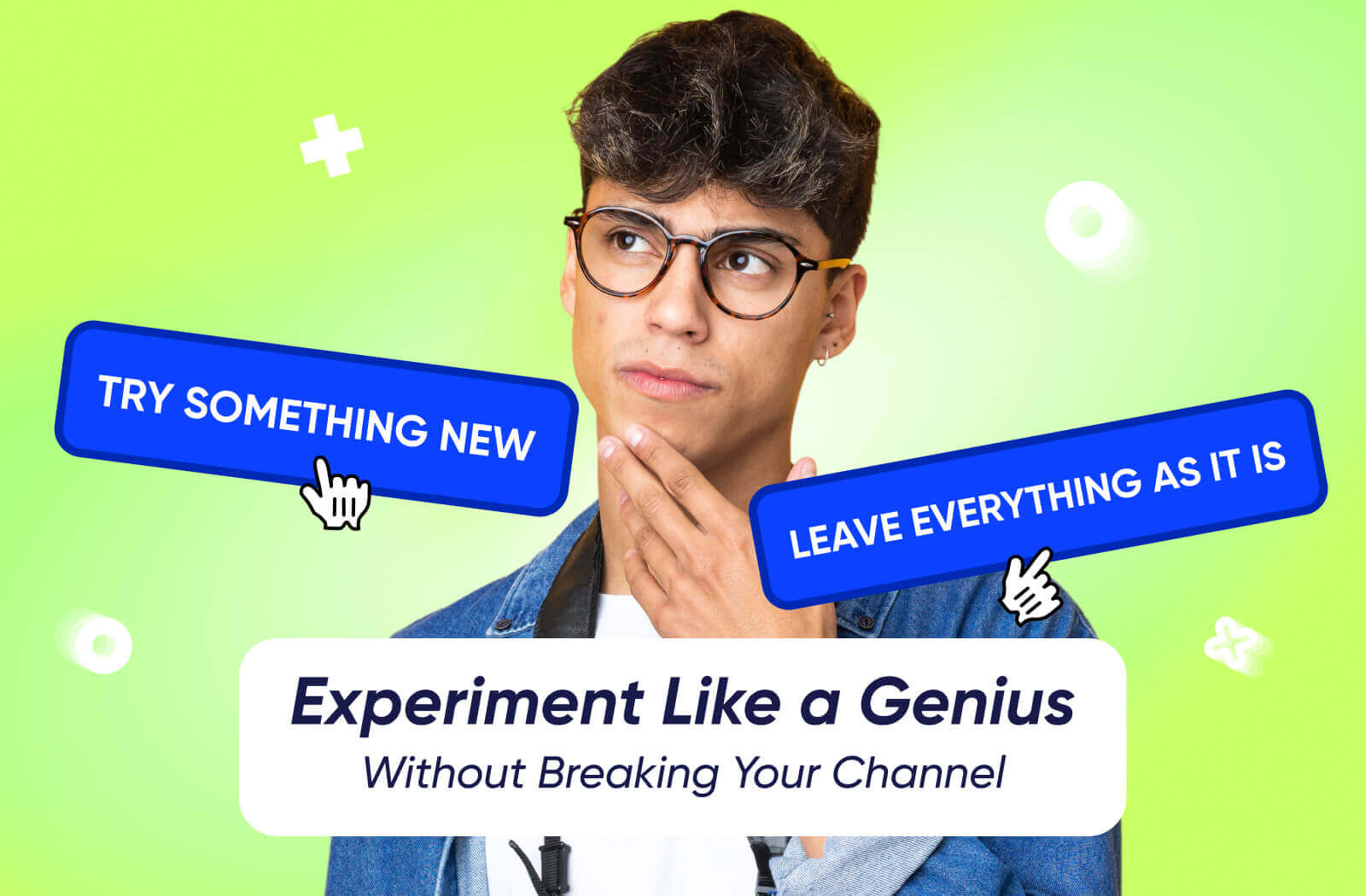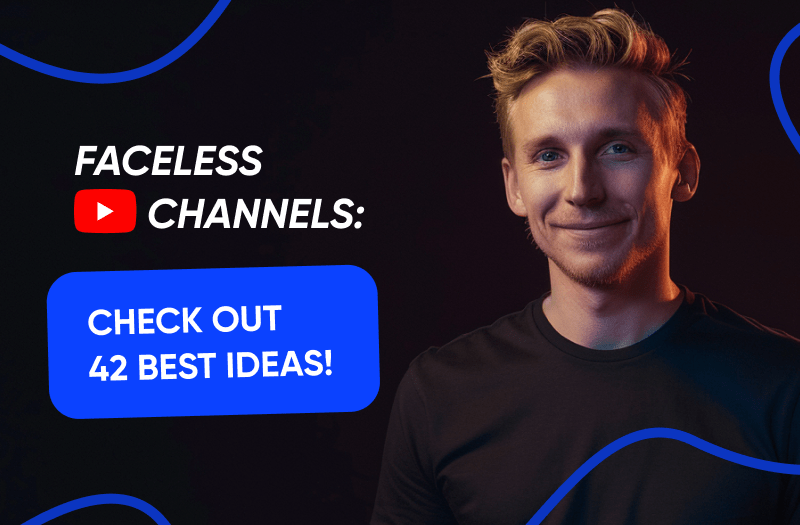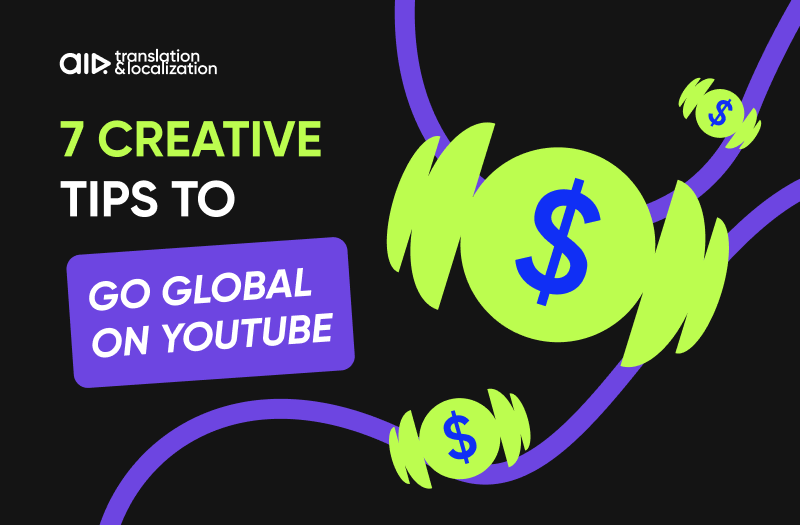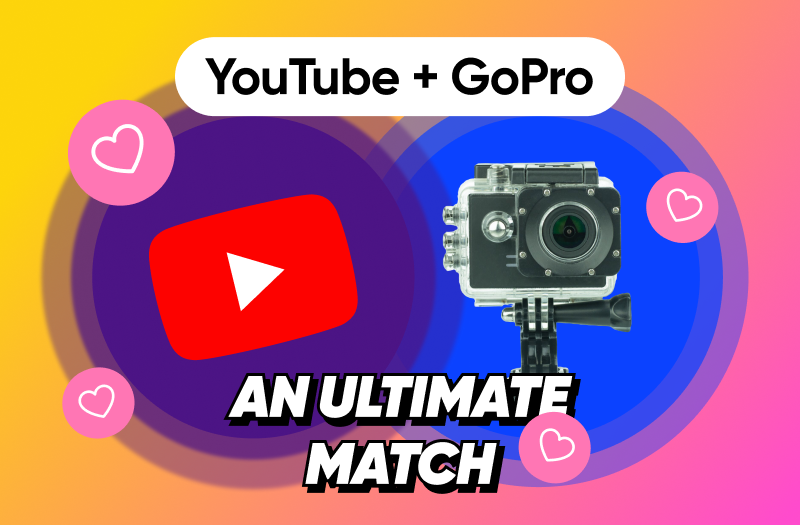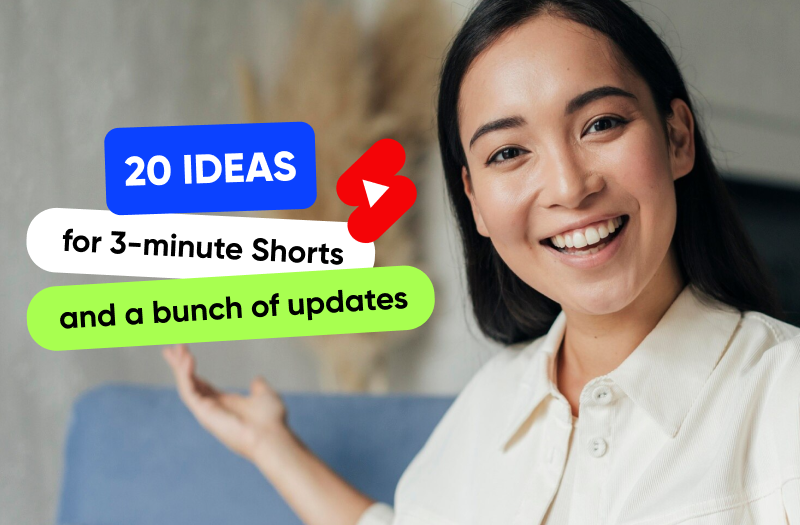
Ever wanted to try something new on your channel, but worried it might fail? In this case, you can test new content types on YouTube without ruining what you’ve built.
In this article, we’ll show you how to experiment safely and with purpose, based on what we’ve learned from thousands of creators who’ve done it right.
First: Know What You’re Actually Testing
There’s a big difference between switching topics and switching formats. Many creators confuse the two, but understanding this distinction is crucial when testing new types of content on YouTube.
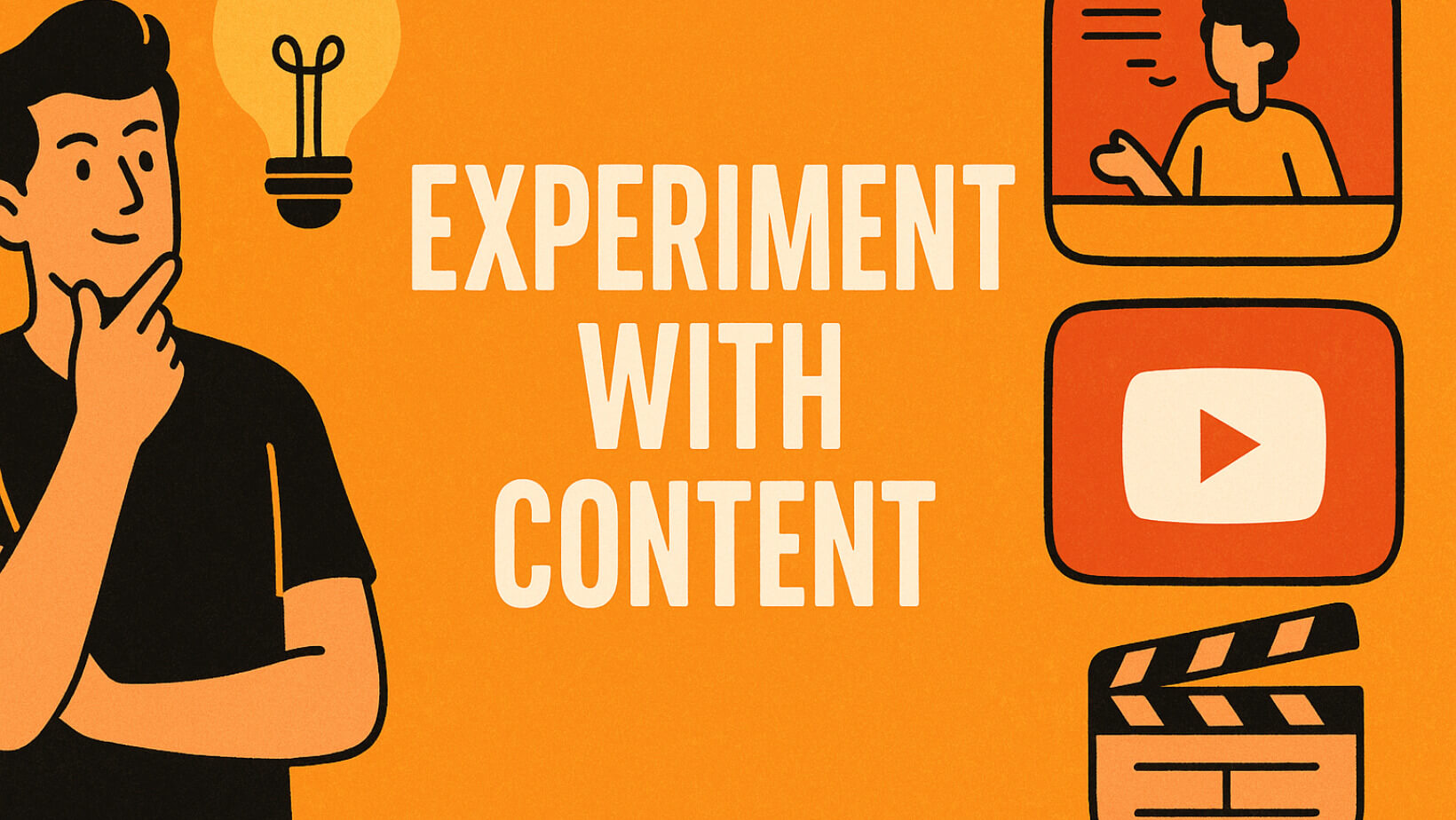
You can stick to your core niche, like finance, fitness, or education, but explore different formats within that. Among the most common YouTube content types: tutorials, commentary, interviews, explainers, challenges, vlogs, reviews, and much more.
Trying a different style – say, switching from a whiteboard tutorial to a reaction video is far less risky than switching from “investing tips” to “cooking recipes.” You’re still serving the same viewer, just presenting the value in a new way.
That’s why we say experimenting with formats, not topics, is often the safest entry point when exploring different types of content for YouTube.
Memberships: The Experimental Playground
When you're considering branching out with new types of content for your YouTube channel, don’t go all-in right away.
Use your Community tab and ask your audience. Post a poll. Also, you can test concepts in Memberships.
In fact, one of the most underrated places to test is inside Memberships. And we've shown you earlier how easy it is to launch, so make your experimentation part of the channel’s narrative.
Until you test the format, you won't know its effectiveness. We’ve seen this over and over again. Let’s look at some case studies.
Entertainment Channel Adds Depth (And Viewers)
One of our partners, a news and entertainment channel, builds its audience around humorous takes on viral events. But the creator felt something was missing. They wanted to start conversations that mattered, and experiment with more serious, thoughtful discussions – interviews with scientists, public policy experts, and health professionals.
Rather than surprise the entire audience with an abrupt content pivot, they first published the new format exclusively to channel Members. The creator clearly framed the series as an experiment: “Let’s see if this works.” They even paused during episodes to ask viewers, “Do you want more of this?”
The response was overwhelmingly positive. Members felt involved in shaping the channel’s future. The format later moved into public uploads, armed with feedback and a refined presentation.
That’s one way to test new types of YouTube content with zero risk. And it worked because the creator made the process transparent. The audience felt invited in.
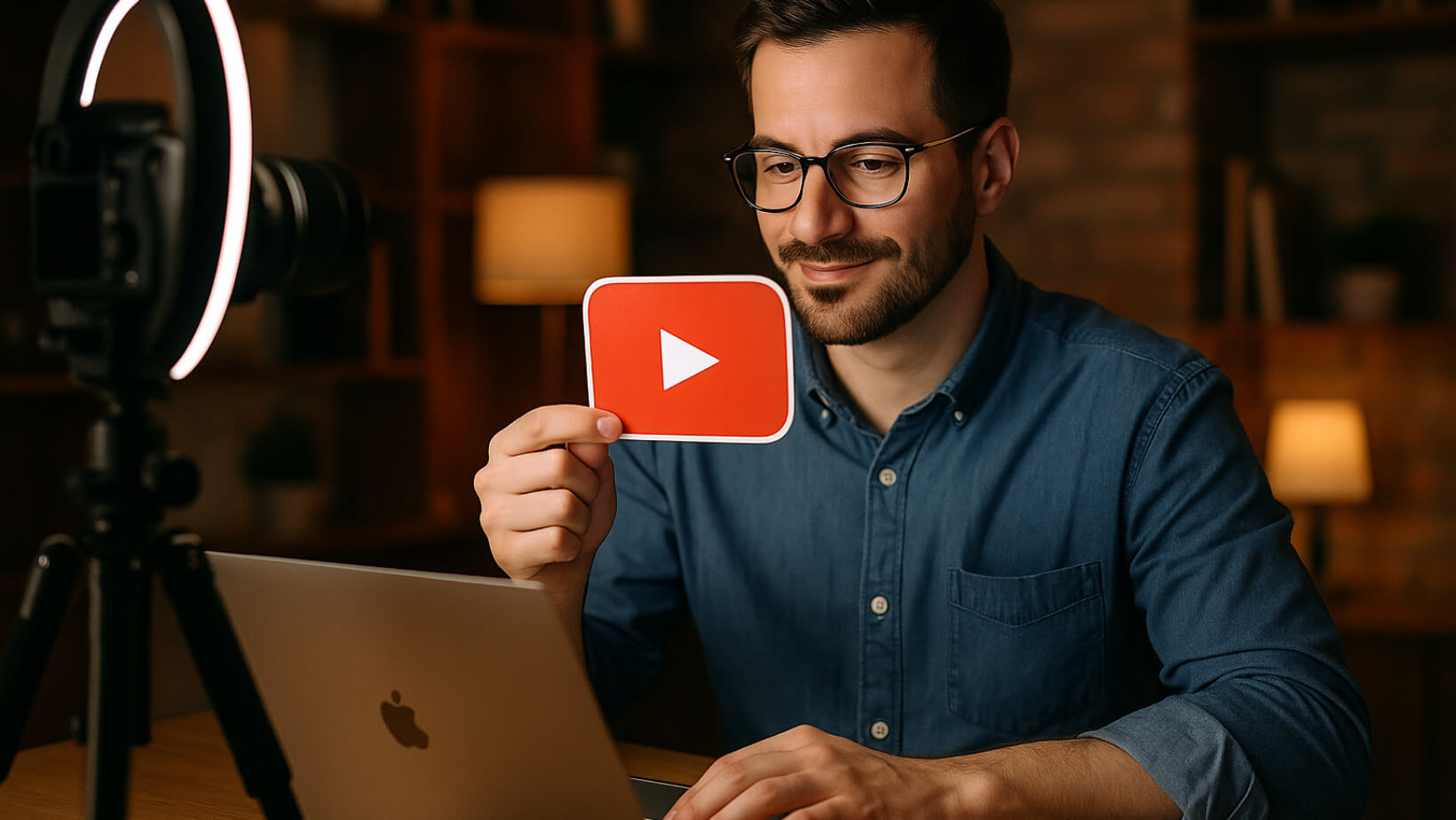
Comedy Channel: Success and Failure
A comedy group we worked with wanted to test two very different formats. One was a psychological roast of characters, layered with humor and real-life themes. The other was a nostalgic series of career origin stories, where each creator described their first jobs.
They used Memberships to test both. One format succeeded, and another was crushed. But because it was gated, there was no damage to the main algorithmic flow. Feedback was direct, honest, and clean.
They took the winning format public, and views surged. And the other was never seen in the light of day. That’s what safe testing looks like.
Want to Boost YouTube Memberships?
Get in touch with us. We’ll audit your channel and help shape your Memberships so they give you both stable income and a safe space to test new content types.
When It Doesn’t Work: The Format Without Purpose
Now, not every experiment succeeds.
A business and motivation creator in our community once released a cinematic, spoken-word video about hustle culture. Visually stunning and carefully crafted voiceover. But it tanked. Because it didn’t serve the channel’s core purpose: helping viewers grow their business mindset.
This is where the difference between beautiful and effective content becomes clear. If you’re exploring types of content to create on YouTube, remember that audiences come for transformation, not just aesthetics.
If you’re stepping outside your usual style, anchor the experiment in something your audience already values. That’s how you minimize risk.
Another Move: The Clip-First Podcast Strategy
In the podcast niche, we’re seeing a quiet revolution: creators switching their upload order.
One of our partners flipped the script by uploading 2–3 short, compelling clips from an upcoming episode before the full thing dropped. These weren’t teaser trailers. They were bite-sized takeaways, each one a standalone insight or highlight.
Every clip ended with a CTA: “Full episode drops Friday. Hit the bell.”
It worked. Viewers arrived warmed up. Retention rates climbed. Comments showed deeper engagement. And it didn’t require changing the content itself, just how it was presented.
This kind of creative reordering is a low-risk way to test how different types of video content on YouTube perform. Same message, but new format and smart test.

Educational Channels Making Jokes
An education channel we support, mainly focused on study tips, decided to test comedic sketches about exam season.
At first glance, it looked risky. Their previous uploads were quiet, focused, study-with-me style videos. But the new format worked. Because it still served the same person: stressed students who were preparing for finals.
And it came with context. The creator introduced the video by saying, “I’m trying something new, so tell me if this helps you laugh through the chaos.”
The audience approved and asked for more. The channel retained its identity while evolving its delivery.
If you're wondering what the most popular types of content on YouTube are, the answer depends on who you’re serving. Vlogs, challenges, tutorials, explainers – they’re all great, but the best types of YouTube content for your channel are the ones that keep solving your audience’s problems in fresh ways.
AIR Partners Hit 125+ Billion Views
Looking for a boost? Get an expert YouTube channel audit to unlock hidden growth spots!
The Algorithm Isn’t Your Enemy
In fact, the YouTube algorithm is neutral. It just amplifies signals based on how real people respond. If you post a video that your audience doesn’t click on or engage with, YouTube takes that signal and reduces distribution.
So when you upload new types of content for YouTube, think audience-first. Give context and let them opt in. When the viewer’s happy, the algorithm follows.
AIR Media-Tech has helped thousands of creators explore different types of YouTube content across every niche you can think of. With access to deep analytics and success patterns from over 3,000 channels, we know what works and when to be cautious.
If you’re sitting on an idea that feels a little too bold or too different, reach out to us. We’ll help you stress-test it before you go live. And we’ll show you how to expand your creative range without sacrificing performance.

You’re Allowed to Evolve and Try New
The pressure to stick to one thing is real. Especially when your channel starts to grow. But creators evolve, audiences change, and platforms reward innovation when it’s done right.
Don’t be afraid to try new YouTube content types. But understand what you’re really changing. And most importantly, serve your viewer first. That’s the foundation. Everything else is experimentation.
Want to explore which YouTube channel content types and formats make sense for your niche? Or test something bold without risking your growth? Just contact us. AIR Media-Tech exists to make experiments safe, data-driven, and successful.
The only thing worse than a failed video… is the great idea you never tested.
